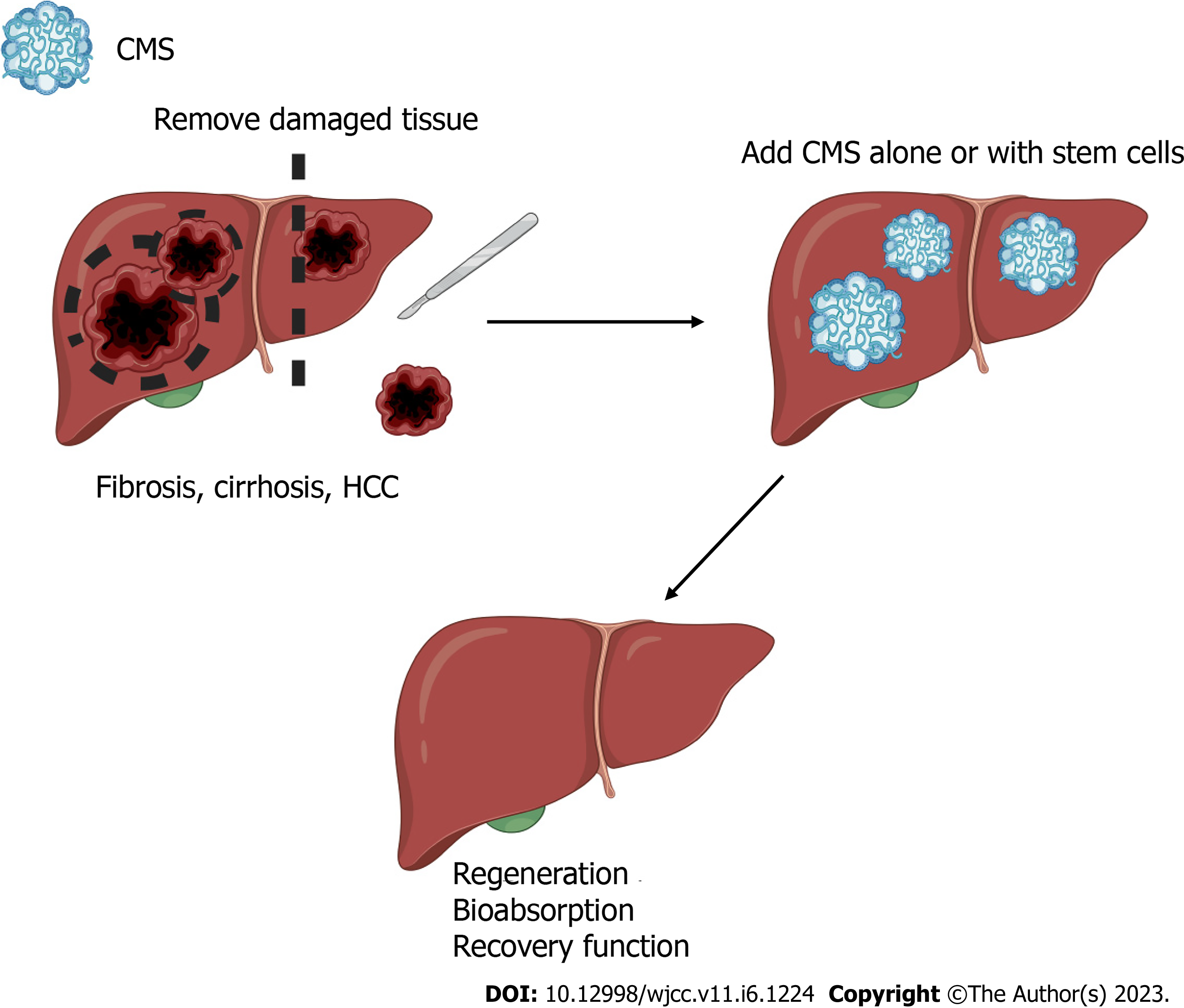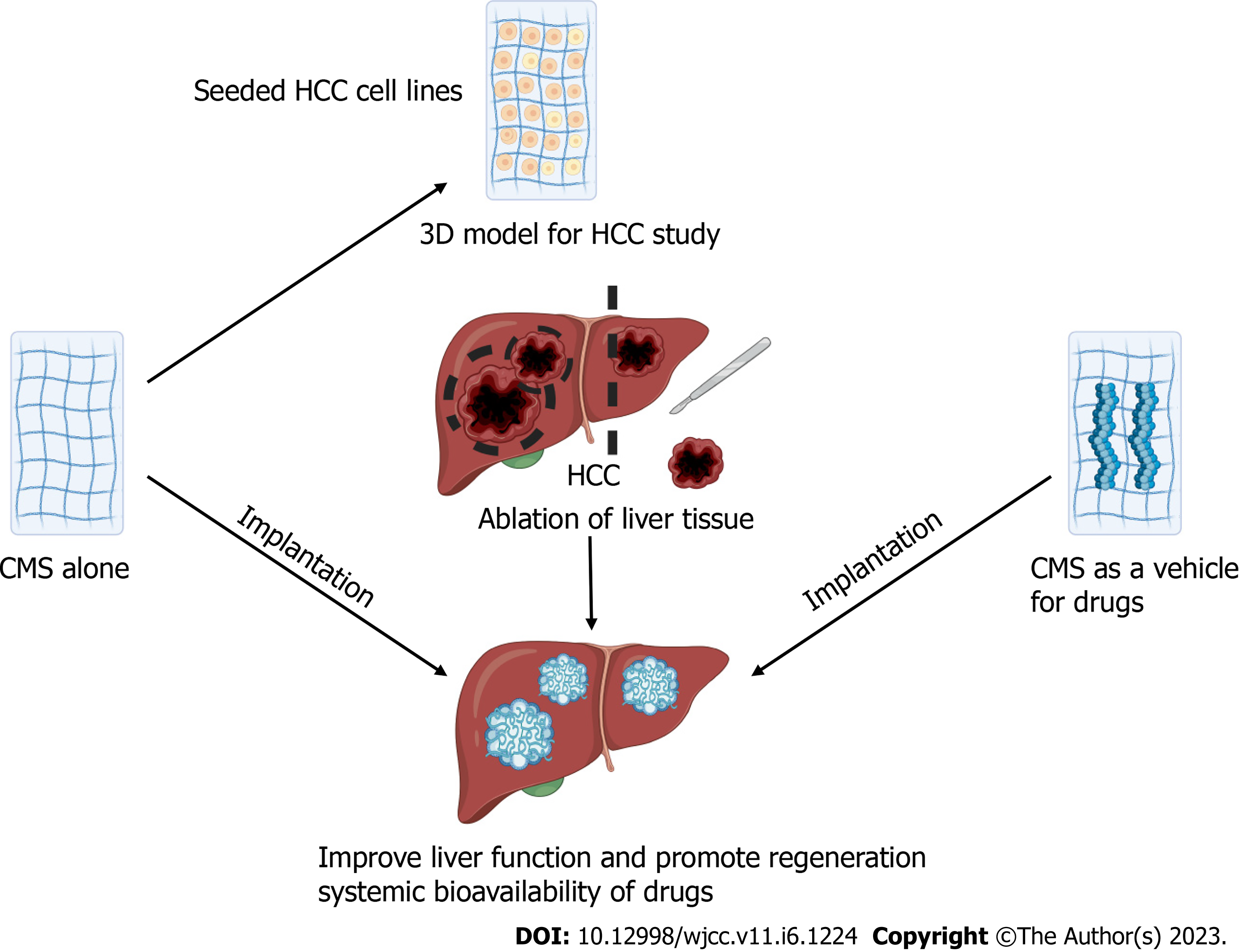Copyright
©The Author(s) 2023.
World J Clin Cases. Feb 26, 2023; 11(6): 1224-1235
Published online Feb 26, 2023. doi: 10.12998/wjcc.v11.i6.1224
Published online Feb 26, 2023. doi: 10.12998/wjcc.v11.i6.1224
Figure 1 Collagen matrix scaffold implantation in chronic liver disease.
A: Identification and extirpation of zones with excessive damaged tissue at early or advanced stages of chronic liver disease; B: Implantation of a collagen matrix scaffold (CMS) that mimics normal liver tissue alone or in combination with mesenchymal stem cells; C: Restoration and normal function and subsequent natural elimination of CMS by the host.
Figure 2 Collagen matrix scaffold implantation in hepatocellular carcinoma.
Collagen matrix scaffold (CMS) can be used alone or in combination with hepatocellular carcinoma cell lines (e.g., HEP-G2 and/or HuH7) as a 3D model. Resection of tumor- or liver-damaged tissue and subsequent implantation of CMS alone or impregnated with antineoplastic drugs can be used to evaluate drug bioavailability and improve liver function.
Figure 3 Challenges and limitations of collagen matrix scaffolds.
A: Xenogeneic sources of collagen promote allergic reactions, rejection or risk of infections (e.g., bovine spongiform encephalopathy). Lyophilization and/or electrospinning methods are used to obtain collagen matrix scaffold (CMS), which alter their natural properties, including isotropic organization; B: Hybrid collagen matrices using crosslinking enzymes (e.g., lysyl oxidase and transglutaminase) and glycating agents (high concentrations of ribose) to improve mechanical properties and stiffness; C: The production of human recombinant collagen is expensive, and current recombinant systems lack native prolyl 4-hydroxylase activity; D: The available sources of CMS are obtained from bovines and pigs using lyophilization and/or electrospinning methods; E: Nukbone obtained from bovine condyles as a CMS source showed great advantages; however, it is important to validate its use in clinical trials. The next step of CMS is explored in the context of the different stages of chronic liver disease induced by distinct liver insults.
- Citation: Martinez-Castillo M, Altamirano-Mendoza I, Zielinski R, Priebe W, Piña-Barba C, Gutierrez-Reyes G. Collagen matrix scaffolds: Future perspectives for the management of chronic liver diseases. World J Clin Cases 2023; 11(6): 1224-1235
- URL: https://www.wjgnet.com/2307-8960/full/v11/i6/1224.htm
- DOI: https://dx.doi.org/10.12998/wjcc.v11.i6.1224











